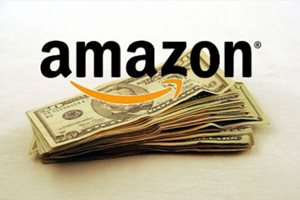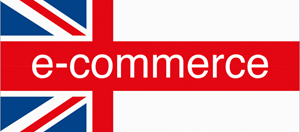eCommerce News Roundup ft Amazon, JD.com, eBay & More
There has been a lot happening with respect to e-commerce in general — particularly in regards to Amazon, eBay, JD.com, Amazon Alexa, and the UK e-commerce market. In this round-up, we will discuss the latest major e-commerce news worldwide.
Amazon Wants To Knock Down the Wall between Banking and Commerce
This week kicked off with the news reporting that Amazon is in early talks with the country’s  biggest banks, including JPMorgan and Chase & Co. about a potential partnership to develop a checking-account-like product. Although the talks are at the explanatory stage, the Seattle-based e-commerce behemoth has been studying and experimenting to see if there is a receptive audience for this type of product out there. Let’s look into the primary drivers behind this initiative:
biggest banks, including JPMorgan and Chase & Co. about a potential partnership to develop a checking-account-like product. Although the talks are at the explanatory stage, the Seattle-based e-commerce behemoth has been studying and experimenting to see if there is a receptive audience for this type of product out there. Let’s look into the primary drivers behind this initiative:
First off, there is an emerging interest for Amazon to satiate. A recent study conducted by Bain, the strategy consultancy, revealed that nearly 60% of bank customers in the US were willing to try a financial product from tech groups they already use. More interestingly, the survey also disclosed that Amazon and PayPal were the two brands consumers would trust most with their money, ahead of Apple, Google, Microsoft, Facebook, and Snapchat.
Secondly, there is an untapped group of consumers who are connected but unbanked or underbanked. Due to the lack of credit, this group, naturally, heavily relies on cash or checks to make their purchases - which leaves online shopping out of the discussion. Far worse, the size of the group is hard to overestimate as more than a quarter of U.S. households have no or limited access to checking and savings accounts.
Thirdly, Amazon has been working on effective ways of appealing to the lower-income shopper to generate new revenue streams, as according to analysts at Morgan Stanley, its new prime subscriptions flattened in the third quarter of 2017. Since 82 percent of U.S. households with more than $112,000 in annual income are already Prime members and its reach is the lowest among those that make less than $41,000 a year, the company’s efforts for Amazon Prime's penetration of lower-income households are very timely and imperative. With this goal in mind, in June 2017, Amazon started an initiative called Prime Discount to interest lower income demographics, especially for those enrolled in the government's Supplemental Nutrition Assistance Program, with an electronic benefit transfer (EBT) card that works much the way a debit card does. As a result of that discounted Prime service initiative, Prime penetration for lower-income user groups making less than $50,000 per year rose to 56% from 51% in the second quarter of 2017.
The Amazon Cash program was also part of Amazon’s overreaching goal of including lower-income shoppers. In November, the company enabled shoppers to deposit at 7-Eleven stores nationwide as little as $15 and as much as $500 into an Amazon account through its "Amazon cash" program. Shoppers can then use that cash to shop on Amazon. Considering nearly one-half of the U.S. population lives within one mile of a 7-Eleven store, that program created a great opportunity for Amazon to penetrate into uncharted territories.
"We felt we had a market opportunity, how do I create digital inclusion for consumers who are unable to take part in the digital economy. Amazon Cash is part of that overall strategy," Gurmeet Singh, chief digital officer and chief information officer at 7-Eleven, told CNBC in a previous interview.
Another integral focus of Amazon’s talks with the financial institutions for developing a checking account-like product is poaching Millennials who are becoming distrustful of banking institutions as well as the younger consumers without bank accounts. According to Goldman Sachs, 33% of millennials surveyed said they do not anticipate needing a bank account in the next five years.
"We think Amazon's aim with expanding its financial offering is less about disrupting the financial sector and more about increasing engagement on its own marketplace," analyst Justin Post wrote in a statement. "While there may be some ability for Amazon to reduce the fees it pays to banks and payment processors by creating a closed-loop prepaid debit card type of product, we think that Amazon's primary motivation would be to attract younger and underbanked customers that otherwise would find it difficult to shop online."
It is now clear that this project may bring forward great opportunities to Amazon but what is in it for the financial institutions? Well, Amazon is tirelessly expanding its footprint into many various sectors and whichever area it invades, it is becoming a fearsome competitor for the big players. Given its more than $700 billion market value surpasses the combined value of JPMorgan and Bank of America Corp, the two biggest U.S. banks, keeping this potential competitor close as well as taking advantage of its favorable reputation among Millennials, whose financial habits and trust for the industry are altering at a fast pace, it would be a good idea for the financial giants.
It is worth noting that LendEDU, an online student-loan marketplace, has recently surveyed 1,000 Amazon customers and found that 38% said they would trust Amazon to handle their finances equally as they would a traditional bank.
That being said, some analysts are also warning the financial industry about a potential partnership with a company almost twice its size, JPMorgan has a market capitalization of $393bn, compared with Amazon’s $732bn. Brendan Dickinson, a partner at Canaan Partners, an early-stage venture capital firm, suggested: “In the short term I’m sure [a deal is] financially lucrative. Though in the longer term it could look like the movie studios partnering with Netflix to distribute their back catalogs — it was a great cash bump at the time, but it gave rise to the studios’ existential threat.”
With transforming financial products into native features of its ecosystem, Amazon certainly would not only reach out to a historically untapped segment of the consumer market but also save money on payment processing fees. However, more importantly, since data and finance always go hand-in-hand, Amazon, which already knows so much about its customers, would get a much deeper view into consumer behavior because this time, the e-commerce giant would still be able to get insights even when consumer activities are taking place outside of its own ecosystem.
It is still a huge question mark whether or not the talks will come to fruition because Walmart tried to launch a similar project years ago but it eventually had to shut it down due to regulatory and financial services industry objections. So we don’t know just yet if Amazon is destined the same way.
Sales at UK’s Biggest Online Retailers Jump 23% In a Year
Reynolds Porter Chamberlain LLP, City-headquartered professional services firm, researched  the top 20 biggest online-only retailers in the United Kingdom to find out the state of the e-commerce boom in the UK. According to the findings, it shows no signs of slowing down anytime soon. Sales at the UK’s 20 biggest pure players have jumped by almost a quarter (23%) in the last year, hitting £8.4 billion in 2016/17, up from £6.8 billion 2015/16.
the top 20 biggest online-only retailers in the United Kingdom to find out the state of the e-commerce boom in the UK. According to the findings, it shows no signs of slowing down anytime soon. Sales at the UK’s 20 biggest pure players have jumped by almost a quarter (23%) in the last year, hitting £8.4 billion in 2016/17, up from £6.8 billion 2015/16.
The biggest motivation behind this jump is the rise of mobile commerce, according to the firm. Besides the wide adoption of mobile commerce via smartphones, the study also touched upon the significant contribution of the following developments that have been driving the e-retail boom:
-
AI-driven ‘chatbots’ on mobile e-retail platforms which engage shoppers in conversation to advise and suggest purchases.
-
Augmented Reality functionality in e-retail apps, allowing shoppers to see exactly how a purchase will look in their home.
-
Use of spoken keywords for AI-enabled smart speakers such as Amazon’s Echo – US consumers can already order from Walmart through smart speakers.
-
‘Snap and shop’, which allows shoppers to search for purchases using their smartphone cameras – this can be done through social media platforms like Pinterest.
On top of these innovations being injected into the commerce world, Jeremy Drew, Co-Head of Retail at RPC drew attention to evidence of the extent to which online retailers are also sharpening their competitive edge by investing in automation.
As we reported in the previous e-commerce roundup article, Canada’s second largest food retailer Sobeys Inc announced that they have entered into an agreement with the e-commerce platform provider Ocado in an effort to expand its online business. In the scope of the deal, Ocado is also tasked with building a warehouse outside Toronto equipped with robotic technology, which is a £150 million investment. This project is estimated to be complete in two years. Once that facility is done, the two companies say they may build similar facilities in other urban markets.
JD.com's Investments to Head Off Alibaba Resulted In Losses In Q4
Alibaba may be the first company that comes to mind when it comes to e-commerce in China,  but its formidable challenger, China’s only online retail giant JD.com. has continuously been emerging as well. The Beijing-headquartered company has reported its first year of profitability as a public company. For its fiscal 2017, it posted a 40.3 percent increase on 2016’s revenue, which resulted in an RMB 2.0 billion for the year.
but its formidable challenger, China’s only online retail giant JD.com. has continuously been emerging as well. The Beijing-headquartered company has reported its first year of profitability as a public company. For its fiscal 2017, it posted a 40.3 percent increase on 2016’s revenue, which resulted in an RMB 2.0 billion for the year.
Thanks in large to a surprise $35 million profit in Q1 and $151 million profit posted in Q3, the nearest e-commerce competitor to Alibaba in China reported $18.0 million profit on total revenue of $55.7 billion. Why didn’t the company end up with a significantly profitable fiscal year after those lucrative quarters? The culprit that ate the profit was JD.com’s fourth-quarter loss of $139.7 million. Not only that but also annual revenue dropped by 18 percent year-on-year and the loss was nearly double the prediction from analysts polled by Reuters. The reasons why the growth in revenue failed was JD.com’s efforts to head off rival Alibaba.
While CFO Sidney Huang said smaller margins were linked to investments in new business lines including logistics investments, overseas expansion, artificial intelligence and cloud services, Richard Liu, chairman and chief executive of JD.com, stated: “As we implement our vision of ‘boundaryless retail,’ we are working with top industry players to build China’s most advanced and comprehensive retail ecosystem to reach consumers wherever and whenever they shop. Looking ahead, we will remain focused on using technology, AI, and big-data to revolutionize e-commerce while leveraging JD’s established infrastructure to empower our partners.”
Since the international growth is the key for JD.com, the company has recently launched offices in Europe and Australia, and also plans to expand across Southeast Asia and launch into the US, in a bid to step up the competition with Alibaba. The Southeast Asia region is very critical as Google estimates, the region’s internet economy will grow to $200 billion by 2025. Therefore, with a supremacy in this region, JD.com can gain ground against its fierce rival Alibaba as well as the other big players.
JD.com has also been working closely with Chinese Internet giants Tencent and Baidu, Sougu and Nielsen, inking a number of partnership deals to boost its technology and online-to-offline retail strategies. JD.com and Tencent went on a buying spree to make exclusive partnerships with shopping malls, convenience stores, cinemas, hotels, and other commercial businesses across China.
eBay Acquires Giosis' Japan Business
eBay, the US online retail giant, is planning to expand its presence in Japan with the acquisition of Giosis' Japan business, including the Qoo10.jp platform. As part of its acquisition of Giosis’ Japanese unit, eBay said it will give up its stake in Giosis’ businesses in other markets. Giosis, a Singapore-based business that operates the Qoo10 e-commerce platform across a number of Asian markets, including China, Hong Kong, Indonesia, Malaysia, Singapore, and Japan. The Qoo10.jp platform currently only claims around 2 million users.
of Giosis' Japan business, including the Qoo10.jp platform. As part of its acquisition of Giosis’ Japanese unit, eBay said it will give up its stake in Giosis’ businesses in other markets. Giosis, a Singapore-based business that operates the Qoo10 e-commerce platform across a number of Asian markets, including China, Hong Kong, Indonesia, Malaysia, Singapore, and Japan. The Qoo10.jp platform currently only claims around 2 million users.
eBay has been warming up to the Asian market for years now. In 2009, it snapped up Korean online auction site Gmarket for more than $1 billion. Last year, eBay invested $500 million in India’s Amazon rival Flipkart last year.
“The acquisition of Giosis’ Japan business significantly expands eBay’s footprint in Japan, one of the largest e-commerce markets in the world,” eBay president and CEO David Wenig said. “Building on the strength of the Qoo10.jp platform, we will be able to offer Japanese consumers more inventory from around the world. With the Qoo10.jp platform, we also will be able to serve a new and growing user base, as well as broaden our presence in a dynamic, underpenetrated market with strong e-commerce potential and high mobile adoption.” The acquisition is expected to close in the second quarter of 2018.
Voice Shopping Is The Next Major Disruptive Force in Retail
Last week, OC&C Strategy Consultants unveiled very interesting findings extracted from its  study on growth in voice commerce. Voice shopping is expected to jump to a whopping $40 billion in 2022, up from $2 billion today, across the US and the UK. The new channel appears to be the next major disruptive force in retail.
study on growth in voice commerce. Voice shopping is expected to jump to a whopping $40 billion in 2022, up from $2 billion today, across the US and the UK. The new channel appears to be the next major disruptive force in retail.
-
According to the report, today, 13% of U.S. homes have a smart speaker, and 36% of those homes regularly use the device to make purchases, while in the U.K., 10 percent of households have a smart speaker and 16 percent use it to regularly make purchases.
-
Amazon's Echo has 10% penetration of US homes; Google's Home, 4%, and Microsoft's Cortana, 2%.
-
Currently, 45% of grocery orders replace existing store or online purchases, the vast majority are made through Amazon Fresh.
-
Only 39% of consumers trust in the "personalized" product selection of smart speakers.
-
Smart speaker owners skew younger, are more affluent and are more likely to have children.
-
The three most commonly shopped categories through voice are commoditized: grocery (20%), entertainment (19%) and electronics (17%). Clothing is fourth at 8%.
-
Another interesting detail OC&C found for retailers is that the tally from voice orders isn't typically as high as purchases made online. Shoppers, typically, buy cheaper items, such as phone charger cables, via voice. In fact, the average online basket was $661 for online purchases of electronics, compared with $239 for voice orders.
-
An important note for retailers: products that get listed as Amazon Choice will triple sales while losing that status will result in a 30% sales decline.

Venus Tamturk
Venus is the Media Reporter for CMS-Connected, with one of her tasks to write thorough articles by creating the most up-to-date and engaging content using B2B digital marketing. She enjoys increasing brand equity and conversion through the strategic use of social media channels and integrated media marketing plans.